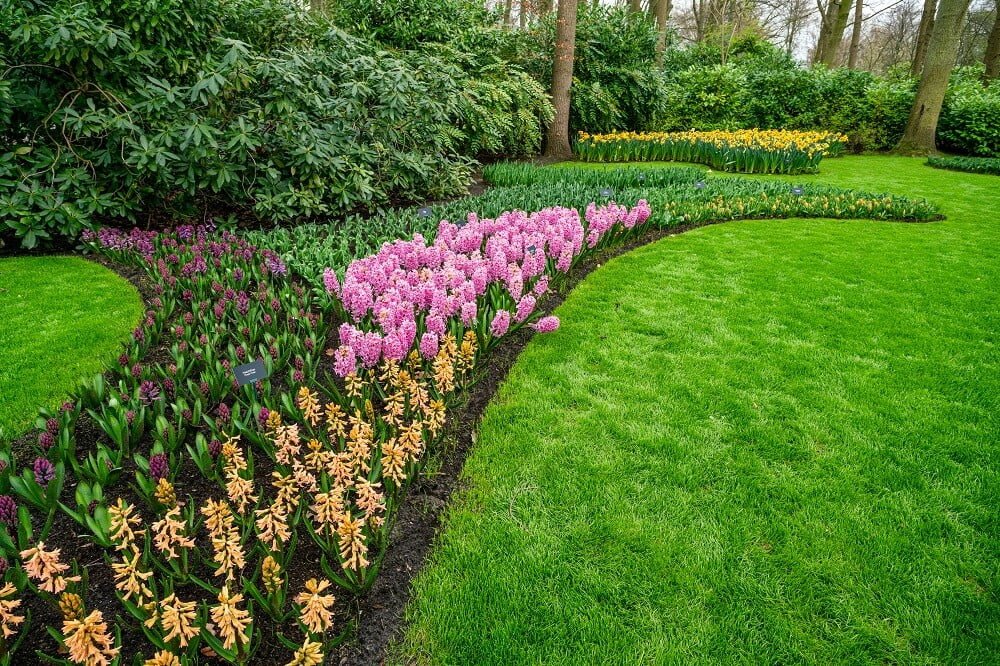

Every garden lover knows that aesthetics and order in a green space play a key role. One of the most important elements that affect the harmony of a garden space is the proper separation of lawn and flowerbed. Question, how to separate a lawn from a flower bed often comes up among gardeners, both amateurs and professionals. Separating the two areas correctly not only enhances their charm, but also makes them easier to look after, prevents plants from overcrowding and helps to maintain aesthetics all year round. In this post, we will give you tips on how to effectively and aesthetically separate the two spaces in your garden to make it a true oasis of peace and beauty.
Appropriate separation of flowerbed and lawn is not only a matter of aesthetics, but also functionality. This ensures that plants from the flower bed do not encroach on the lawn and that grass does not grow where it should not. There are many solutions available on the market to help you keep things tidy.
Edging are one of the most popular solutions among gardeners. They are made from a variety of materials, plastic, metal, concrete or even wood. Their advantage is the ease of installation and their durability. Garden edging blends in perfectly with the natural landscape, at the same time constituting a clear boundary between the lawn and the flowerbed. We particularly recommend RecBord edging, made in Poland from a selected blend of plastics ensuring 10-year durability.
If you are wondering, how to separate flowerbeds from lawn Using only natural materials, opt for stones. They are another solution to add a rustic touch to your garden. They can be laid loosely or in the form of a small wall. Stones are perfect for gardens with a natural feel as well as for more modern gardens. On the other hand, if you want to bring warmth and cosiness to your garden it is worth opting for wooden planks or logs. However, in this case, remember that wood needs regular impregnation to protect it from the elements.
Before laying the edging, it is necessary to prepare the area. Firstly, the exact spot where the edging is to be laid needs to be marked out, and then a small groove needs to be dug along this line. The depth of the groove depends on the height of the edging, but is usually around 5–10 cm. Lay the edging in the dug groove, making sure it is laid evenly and stable. With RecBord products you have an easier task. The design of the brand’s edging allows for quick unfolding and installation. Connecting the elements is done by nailing one edging into another using special ends (male and female).
Without a doubt, yes. Using plants to separate different zones in the garden is not only a matter of functionality, but also of aesthetics. When you consider, how to separate a lawn from a flower bedBut make sure you choose the right species. The boundary between the lawn and the flower bed can be marked using low plants such as lavender, ornamental grasses or pansies. These have two important functions: firstly, they provide a physical barrier to prevent the lawn from spreading into the flower bed. Secondly, they provide an additional decorative element, enhancing the appearance of the garden.
Lavender, with its silvery leaves and purple flowers, adds colour and contrast. Its aromatic qualities also attract pollinating insects, which is beneficial for the entire garden ecosystem. Ornamental grasses such as pennisetum and miscanthus, on the other hand, add dynamism and movement to the landscape, especially when the wind is blowing.
In addition, border plants can help to keep the soil moist, protecting it from drying out too much on hot days, which benefits neighbouring plants in the bed. By using plants as natural borders, you create a harmonious space that brings the different elements of the garden together into one cohesive whole.
Wondering what to do to prevent grass from infiltrating an area lined with stones or bark? Curbs and edging are not the only solution. Root barriers are worth considering. These are vertical barriers buried in the ground to prevent lawn roots from spreading. They prevent grass from penetrating into areas with stones or bark. Laying a layer of mulch, such as tree bark, along the edge of the lawn will also help to prevent grass penetrating into the stone area. Mulch provides an additional barrier and retains soil moisture.
Whichever method you choose, regularly monitor and maintain the boundary between the lawn and the area lined with stones or bark. The key to success is consistency and attention. Regular monitoring of the boundary will catch early signs of grass infiltration. Once you know, how to separate the lawn from the stones you will ensure that grass does not infiltrate other areas and that your garden remains aesthetically pleasing, tidy and functional.
